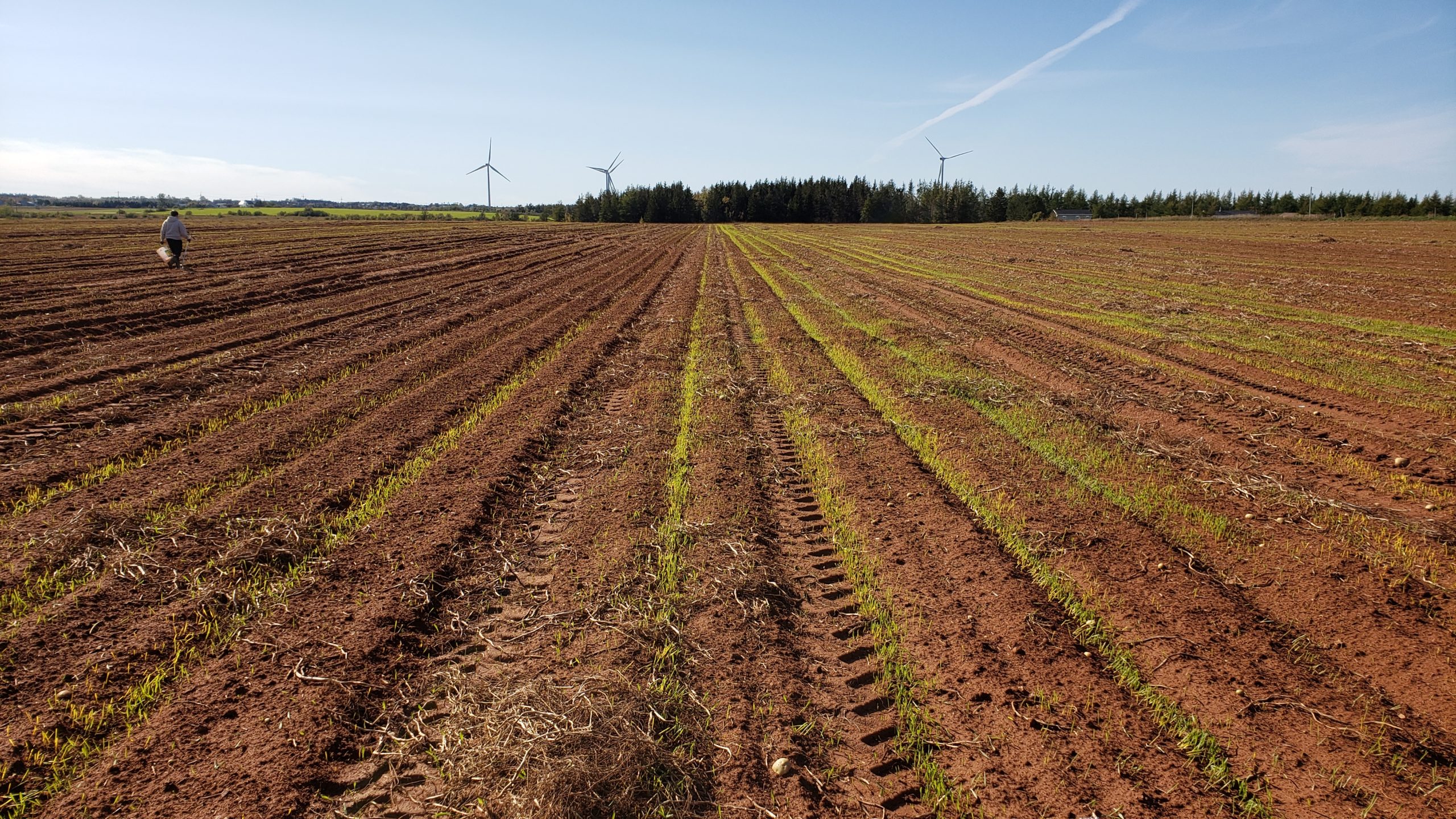
12 Oct Agronomy Update – Oct 12
Hi everyone,
After a cold night, it turned into a great digging day today. Morgan and I were out getting finished up on our first round of Living Labs soil sampling so that we can focus the rest of this week on finishing up potato harvest samples. We’re in pretty good shape…we’re down to less than 10 fields to sample now. Thanks to participating growers for their patience and partnership with us as we get this data collected.
When it comes to yields, this is most definitely a year of variability. We’ve dug samples with over 450 cwt/acre, and we’ve dug samples at around 100 cwt/acre….and everything in between. In some areas, one or two well-timed rains meant 50 or more cwt/acre over nearby fields that didn’t get the same rain. There is definitely some scab around but our samples haven’t been as bad as expected. Hearing some isolated issues with wireworm in multiple areas. Not hearing too much about rot so far (fingers crossed). A reminder that if you do have parts of fields that had a lot of standing water after Teddy, put those potatoes at the front of the pile! Keep an eye on pink rot/Pythium leak too. If worried about pink rot, post-harvest treatment with Confine/Phostrol is an effective option.
If you have concerns about storability/quality of tubers due to possible disease, consider sending a sample in to the Provincial Lab for diagnosis. But don’t take a risk in the meantime…make sure those potatoes are in a place where they can be moved quickly if necessary.
Cover Crops after Potatoes:
I’m seeing a lot of fields with cover crops after potatoes…that’s fantastic! Keep up the great work, everyone. I know it’s extra work & expense…but the impact on keeping soil in your field and building soil health is worth it.
The long-term average cut-off for post-potatoes cover crop establishment is normally around October 15th. However, the weather for the next two weeks looks very favourable to getting cover crops on. High temps are forecast to be over 10 C until the end of the month. That lengthens the window to get covers out of the ground.
At the same time, you will get the best emergence (as well as continued growth next spring) by using winter cereals like fall rye or winter wheat right now. As we get later on the calendar, consider increasing your seeding rate correspondingly, especially if broadcasting.
A few things we’re looking at in some of the post-potatoes Living Labs cover crop fields with participating growers:
- Different species (fall rye, winter wheat, winter barley, spring cereals)
- Different seeding rates
- Different establishment methods (drill, broadcast, before vs. after potato harvest)
We have 4 farms growing winter barley for the first time. I’ve been quite impressed by how quickly it has emerged and established (in as little as 5 days). Now to see how well it survives the winter!
Final note: IT IS NOW TOO LATE FOR BRASSICAS (mustard, radish, etc). Save your money…there isn’t enough time to get those brassicas established (especially with frosts at night).
CanPEDNet Early Dying Survey
I am looking for 30 fields across the province to sample later this month as part of the Canadian Potato Early Dying Network (CanPEDNet) project as part of the CHC Potato Research Cluster. We will soil sample these fields for Verticillium and nematodes this fall. Then we will follow up in the 4 best and 4 worst fields in 2021 to try and match levels of inoculum to levels of disease/yield in the potato crop.
Requirements for fields:
- Must be in potatoes in 2021
- Must be in Russet Burbank or similar PED susceptible variety (ie. Goldrush)
- Don’t have to be a field that you know to be very bad. We need some “good” fields for the survey too. If you have a long-rotation field (5 or more years)…I’d love to have a couple of those again this year.
Please send me an email/text or give me a call by the first of next week if you would like to contribute a field. We’ll share the Vert/nematode results with you after testing is completed.
Soil Sampling Season:
As we get closer to the end of harvest season, make sure that you make soil sampling a priority. Sampling in the fall gives you more time to get results back and make decisions with those results.
EVERY FIELD THAT WILL BE PLANTED TO POTATOES IN 2021 SHOULD BE SOIL SAMPLED!
The Provincial Soil Lab is still offering the free Soil Health Testing package (in addition to the normal S3 test) until the end of the year…take advantage of this offer to get a better idea of the soil health status of your fields beyond simple organic matter metrics. For details on this testing (and how to take and submit samples), visit the PEIDAL site here.
Why is it important to soil sample every field?
- To know soil organic matter levels across fields (or zones) to prioritize areas for organic amendments/manure.
- To have time to work with your agronomist to plan your fertilizer blends and necessary rates
- To have lots of time to make variable rate maps for lime, potassium, etc.
- To identify any zones in your field that next extra attention (ie. low Ca/Mg) as well as identifying zones of fields that possibly shouldn’t be planted next year due to low yield potential.
I hope everyone continues to have a safe remainder of the harvest season. As always, please feel free to give a call or send me a note if you have questions. I’m already thinking ahead on meeting topics for the winter, so feel free to pass along any topics you want us to address!
Cheers
Ryan
Photo: Spring barley on the left, winter barley on the right. Part of Living Labs trial. Planted first of Oct, photo Oct 12th.
